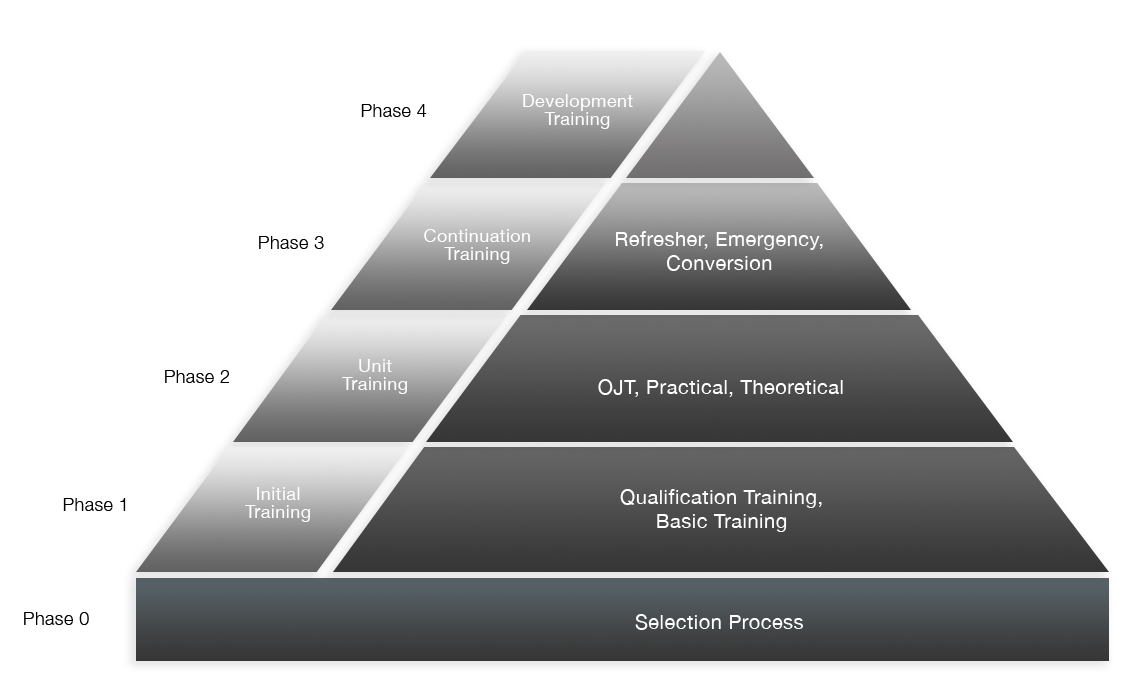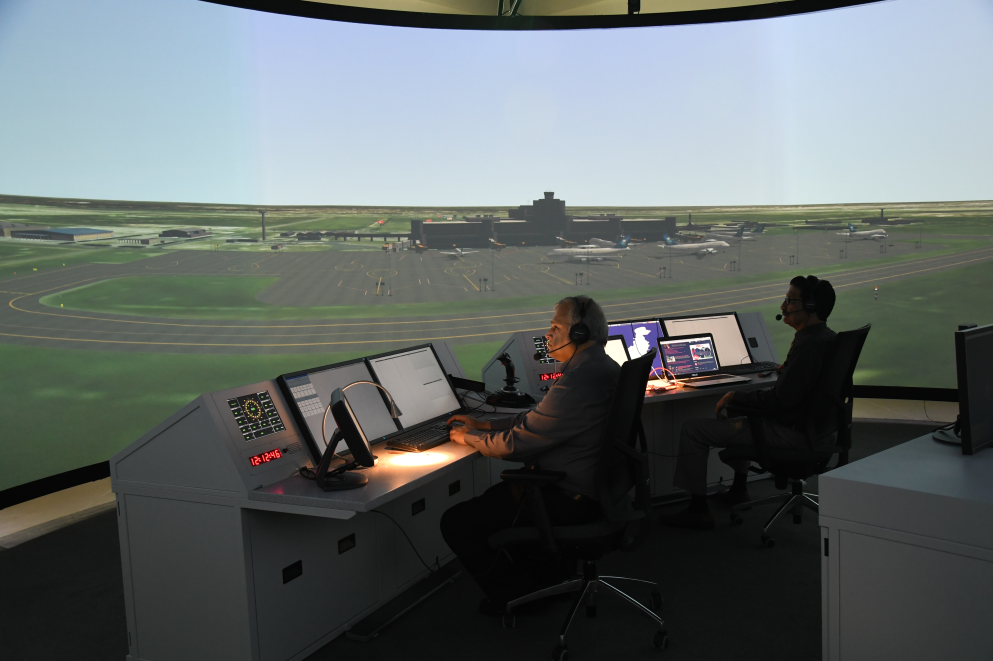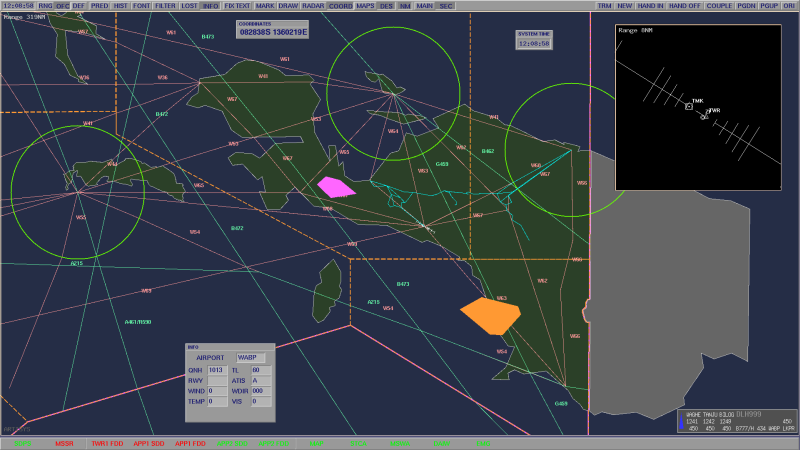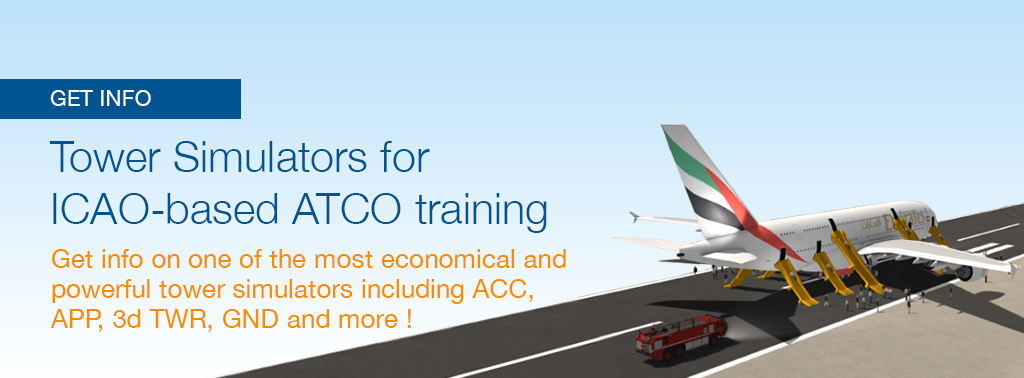To satisfy operational requirements of ATCO and ATSEP at all locations and to reach compliance with ICAO, air navigation services providers (ANSP) should set up Academy Training Centers and OPS Training centers. But how to conceive the simulators?
Qualifying Air Traffic Controllers and Air Traffic Safety Electronics Personnel (ATSEP) is a continuous process. After the initial training period, there are on the job training phases, refresher training, emergency and conversion (get more details).
Figure: ICAO's pyramid of qualification
Many ANSPs therefore decided to place radar and tower simulators in their central training academies, but also to place OPS simulators (operational site simulators) in locations of towers (TWR), approach (APP) and area control centers (ACC).
This dual strategy turned out to be very successful, not only because of logistic, but also because of pedagogical reasons.
Here are some lessons learnt
Basic, extended refresher, and emergency training in academy training centers
Dedicated training centers replicating end-to-end processes and possessing qualified teaching personnel are able to provide sound training during basic formation. But also emergency training, involving various roles (TWR, APP, ACC) should be trained in such a center, given by experts for emergency and escalation routines. Sometimes experts from different backgrounds are needed, or concerted training with other security personnel such as firefighters can be trained.
A central training center is predetermined to serve as a hub to pool such roles. Having various experts at one place is a big asset, froma pedagogical and logistical point of view.
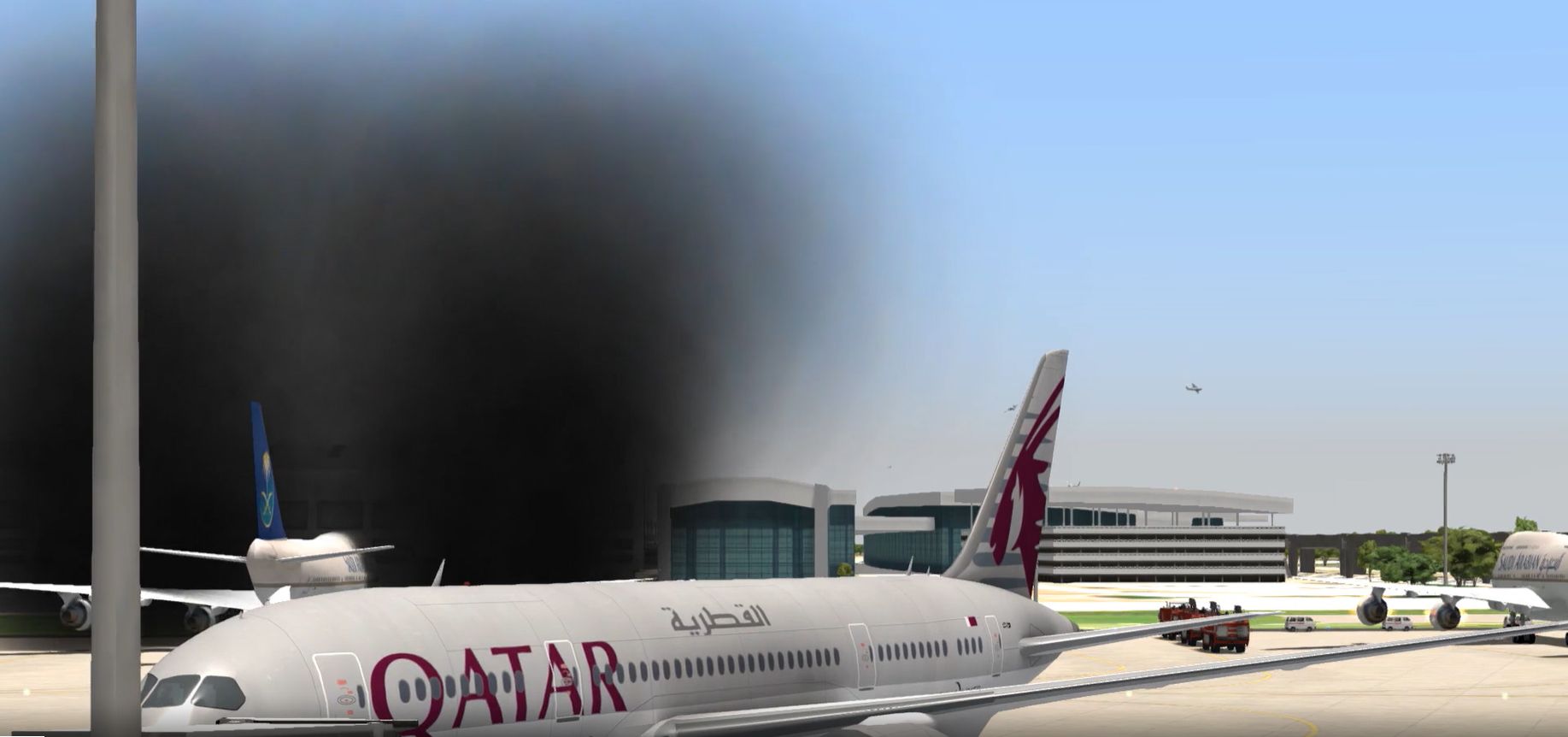
Another advantage of an academy training center is the possibility that students can rotate roles (TWR, APP, ACC) and learn the end to end process in a practical hands-on way and from each perspective.
On the Job training, frequent refresher phases and conversion training in the OPS centers
OPS centers could be theoretically a complete replication of the central training center. This makes sense in large countries where travelling to a central training location is tedious and a logistic challenge.
But also smaller installations make sense as they can be focused on the requirements of specific operational center.
For frequent refresher phases, the local center is perfect. No logistic burden, just walk over to the OPS room, when ever there is time.
Architecture
From an architectural point of view, they can be realized as
- small, independent, full fledged simulators. This gives the location full autonomy. For efficient operations we suggest to synchronize user data with the central academy. That makes sure that the user history files are always up to date. Also exercises should be synchronized between central and remote locations to make sure that everybody benefits. Synchronization could take place e.g., on a daily basis, during times, when the networks are not used intensely.
- FAT clients, connected with the system in the central training center. Such a FAT client solution makes sure that data is always available in the remote location without delays and without putting weight on the network. This approach makes sure that data-intense features like maps or console applications are always remotely available. Only runtime-data (message, flight data, meteo, etc.) is communicated just in time through the network, generated by the simulator in the central location. This runtime data does not require much bandwidth. Pseudo-pilots could sit in the central training center. This avoids redundancy of resources.
Even supervisors at the central training center can be involved.
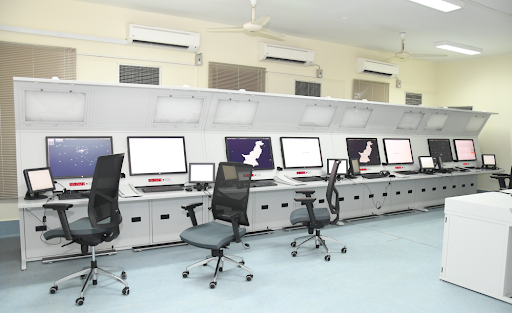
Replicating local characteristics
The OPS simulator can be coined on the local system. It can replicate screen-layout, consoles and configuration. We even suggest to feed-in live data from the local centers and to blend it with the exercise data. It will push the training scenario closer to reality.
Local centers are ideal for conversion training, where ATCOs gain the knowledge and skills needed to make a change in jobs, environment or systems. A system change (e.g. software update in the operational system, change in screens, etc.) can be easily replicated in the simulator screens. But also when conversion means new responsibilities, the expert can acquire and train these in the OPS center.
Modular solutions, customized on your specific needs
Every ANSP has different needs, and a different set up of air spaces and responsibilities. Modular and customer-oriented designs of central and OPS Radar and Tower Simulators are effective and economical. And for the trainees they are good fun.
Let us talk to discuss your specific requirements.

